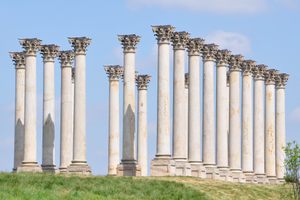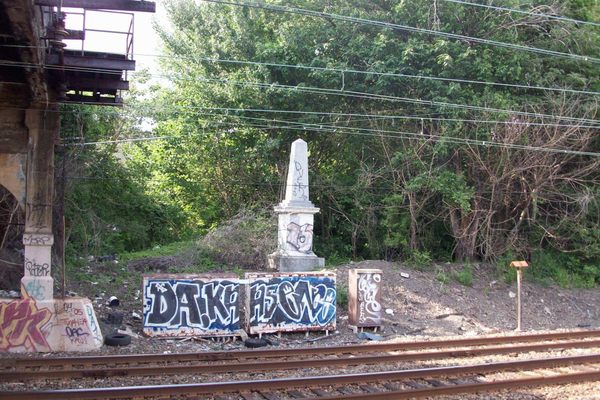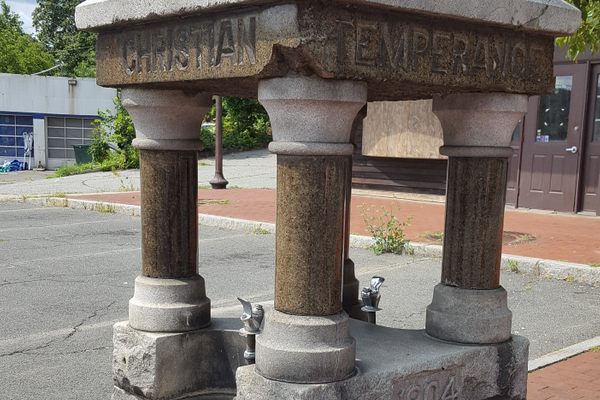About
The Washington Monument is renowned worldwide for its imposing height and historic significance. Yet, tucked away within its marble and granite walls lies a lesser known but equally fascinating feature: the commemorative stones.
Construction on the Monument began in 1848, but it was halted in 1854 due to a lack of funds and political turmoil and did not resume until 1877. During this period of inactivity, a unique tradition took hold—states, cities, foreign countries, organizations, and individuals began donating commemorative stones to be incorporated into the monument.
A total of 193 commemorative stones are embedded in the interior walls of the monument, each designed with carvings or natural features unique to the stone’s origin. Notable donations include stones with jade from Alaska, petrified wood from Arizona, and coral sandstone from Hawaii. Among the items gifted from foreign governments are a stone from the ruins of the Parthenon in Athens and piece of granite claimed to be from among the remains of the Library of Alexandria in Egypt.
As with most things in Washington, political messages are commonplace. With construction taking place during the antebellum period, southern and northern states engraved slogans that highlighted the divisions of the era. Alabama’s stone reads, “A Union of Equality as Adjusted by the Constitution,” a reference to an original Constitutional provision that only three-fifths the number of black enslaved people should be counted in apportioning the House of Representatives. In contrast, Indiana’s block of variegated limestone states, “Indiana - Knows no North, no South, nothing but Union.”
Political divisions also played a role in determining which stones were laid in place. As construction was ongoing in 1854, members of the anti-Catholic “Know Nothing Party” stole a stone donated by Pope Pius IX that was in storage, awaiting placement. A Washington Sentinel article noted that “…the block was evidently mutilated beyond recognition, before it was thrown into the river, was the belief of investigators who found fragments on the banks of the Potomac, the morning after its disappearance.” A replacement stone representing the Vatican was ultimately included in the Monument in 1982.
Most visitors to the Washington Monument are unaware of these hidden gems. The stones are not visible from the exterior and can only be seen by those who secure tickets to the top. During the elevator ride down from the observation deck, the translucent glass windows will defrost, allowing visitors to admire several of the stones.
Related Tags
Know Before You Go
Timed tickets are required to visit the interior of the Monument. Tickets can be reserved online at the National Park Service website, but note that they are limited and sell out fast. The Washington Monument Lodge along 15th Street opens at 8:45 a.m. daily for distribution of free, same day, timed tickets at a first-come, first-served basis. Arrive early.
Community Contributors
Added By
Published
August 20, 2024











































